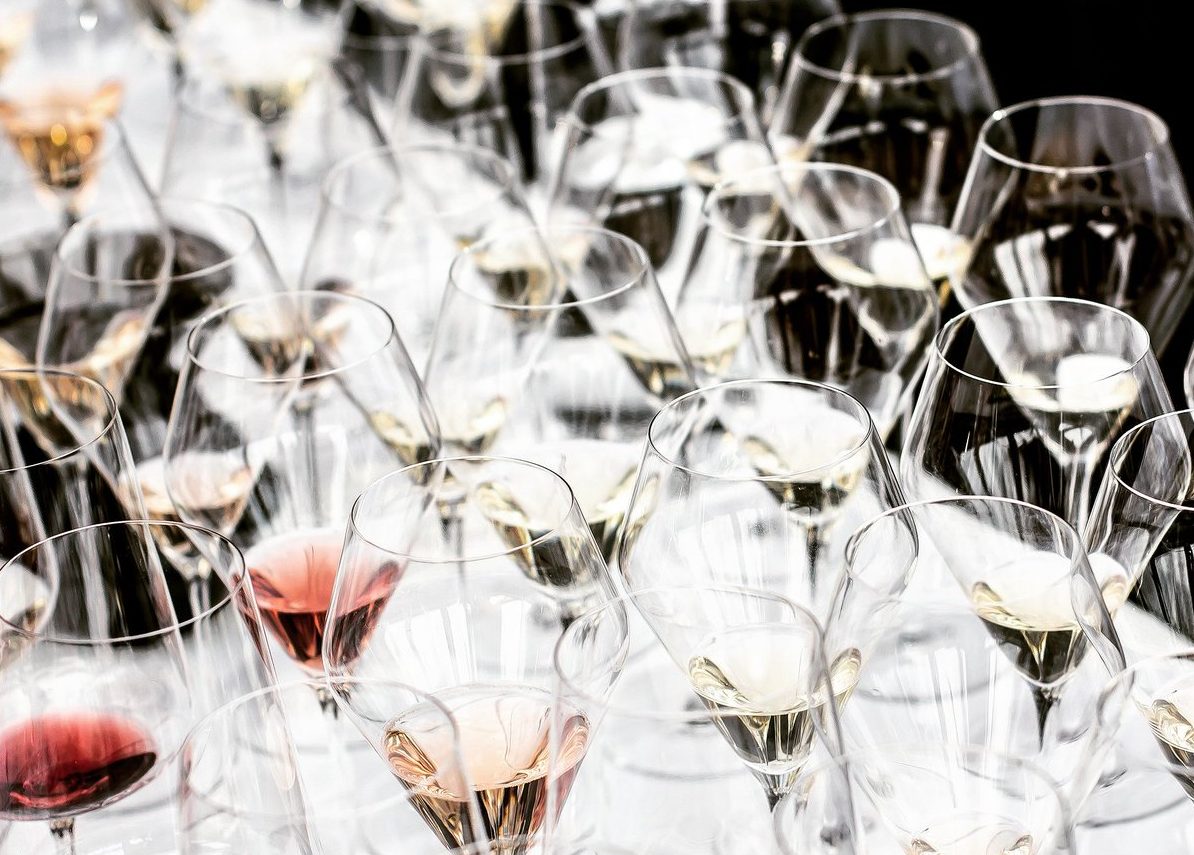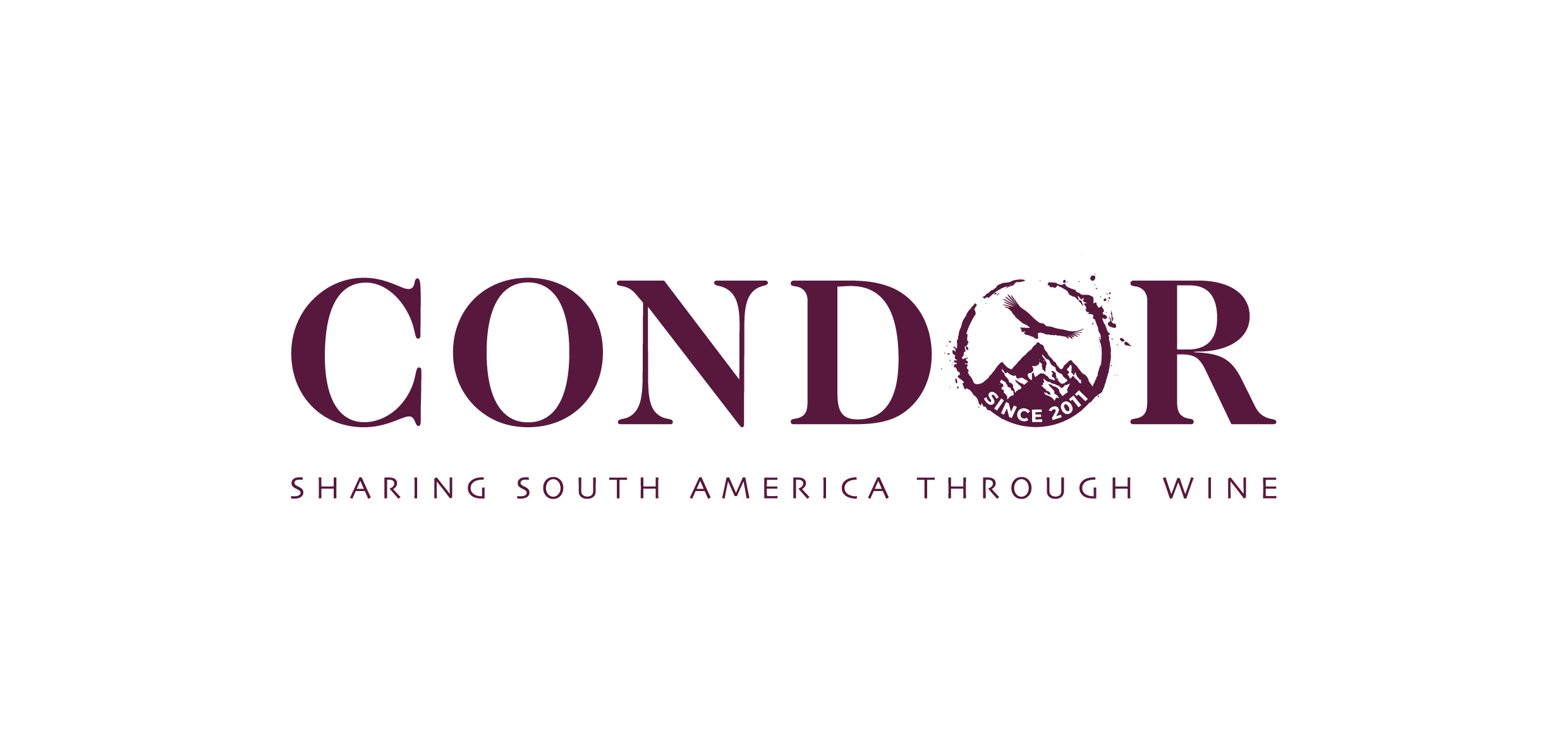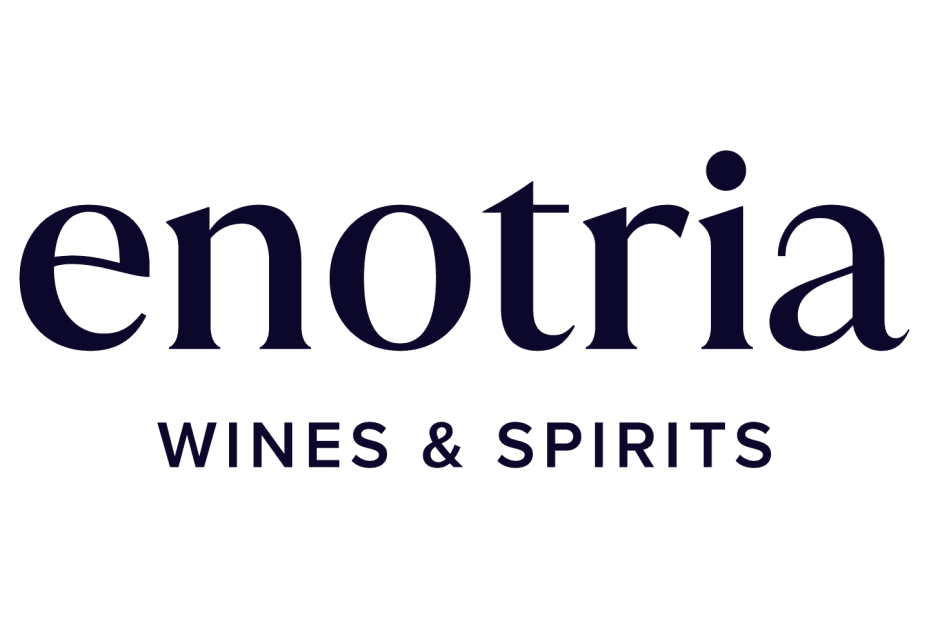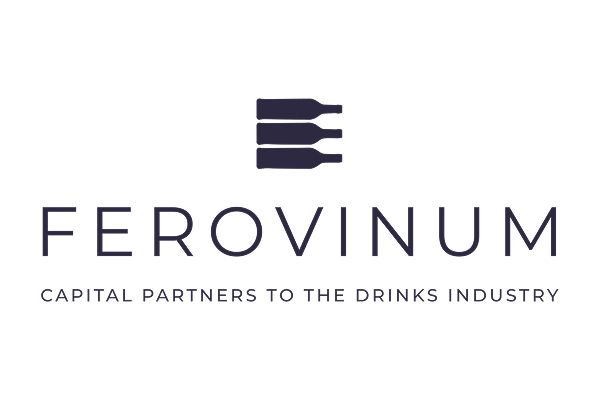Three flights of sparkling were followed by one flight of still wines; Krebiehl lists each flight’s pouring order followed by the results and gives her own opinion about what the results proved.
Billed as the Judgement of London this blind tasting pitched English sparkling wines against Champagnes as well as English still wines versus various (not quite comparable) cool regions. The most striking thing was how difficult it was to tell the best of the sparkling wines apart – I was by no means certain which was which, and neither was the room – incidentally filled with more than a thousand beautiful Zalto glasses at 67 Pall Mall.
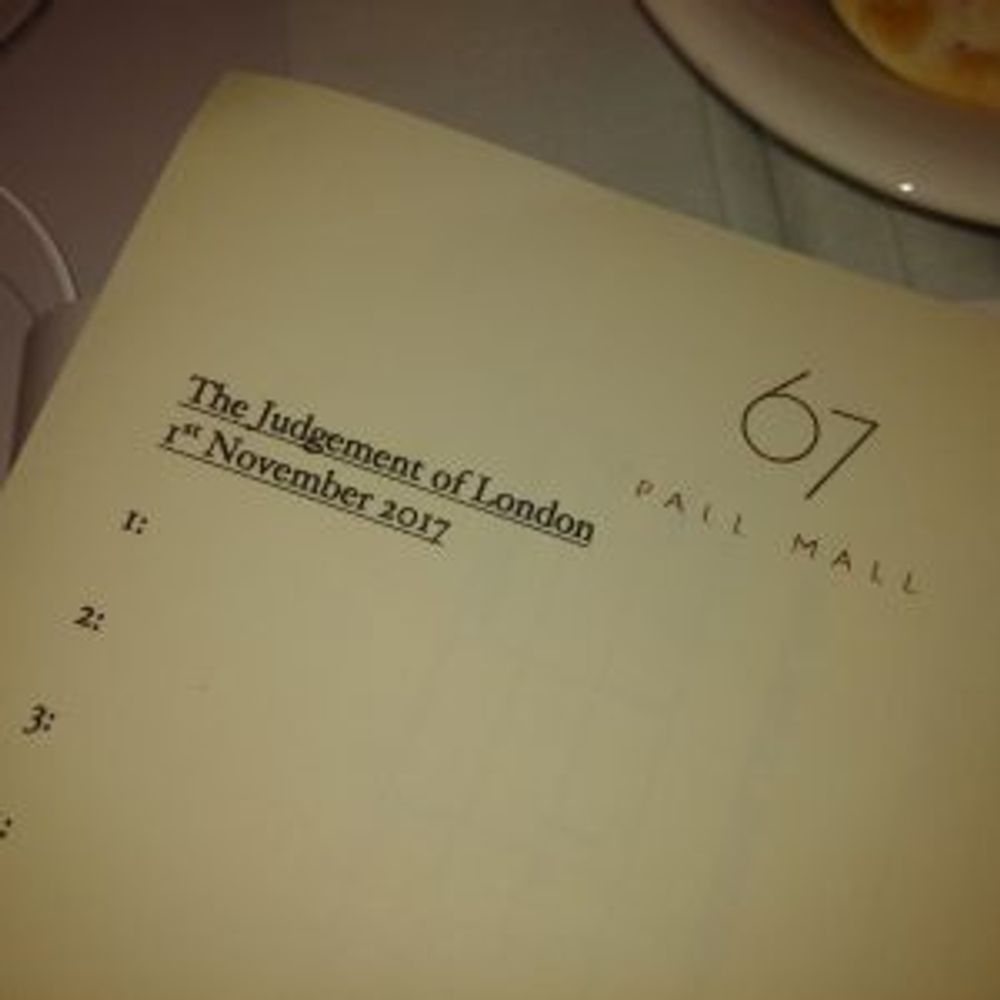
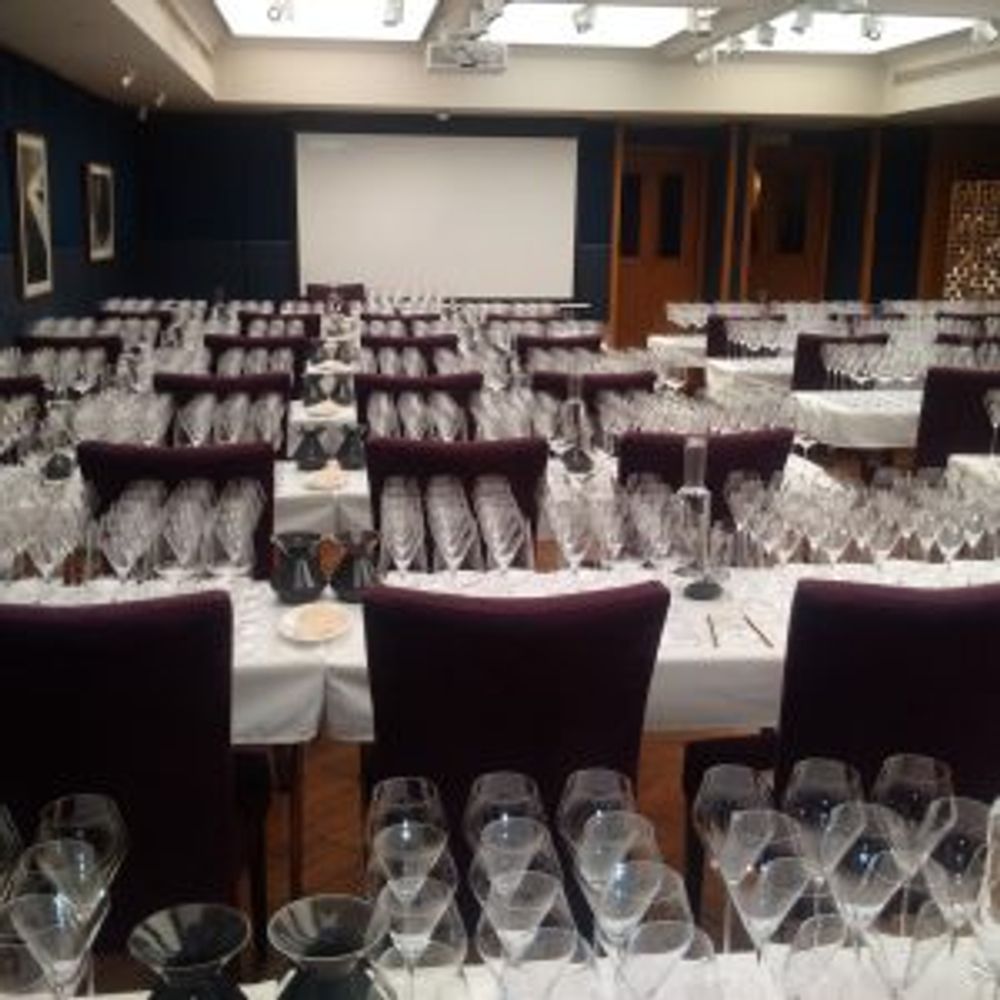
67 Pall Mall, and just some of the 1000 Zalto glasses
Steven Spurrier who has a proven, perhaps even notorious, track record in setting up such blind tastings, had been roped in as the compère for the evening.
It was the 40th anniversary tasting of Spurrier’s ground breaking Judgement of Paris at the same venue earlier in the year as well as a throwaway remark by well known provocateur Marco Pierre White that gave Niels Sherry, general manager at 67 Pall Mall the idea. The chef had said in a recent interview that “only a numpty would buy English wine.”
Grant Ashton, CEO at 67 Pall Mall, opened proceedings to what he said he hoped would be “the first of many Judgements of London. We have no axe to grind but let’s get the best,” he said before assuring a room full of assembled fizz lovers and producers that the tasting would be “completely blind. Even Steven doesn’t know.” Spurrier’s very own and utterly delicious Bride Valley Rosé Bella from Dorset had been served as an aperitif.
Spurrier began by outlining some key facts about English sparkling wine: that production levels had reached 5 million bottles annually; that this figure is set to double within 5 years; that one million vines were planted in this past year alone.
“Some people must be very optimistic,” he observed. There now are 130 different labels of English Sparkling Wine. English fizz is already being exported to 27 countries and export volumes are growing rapidly. Spurrier did not provide comparable figures for Champagne but here are some – just to provide some context:
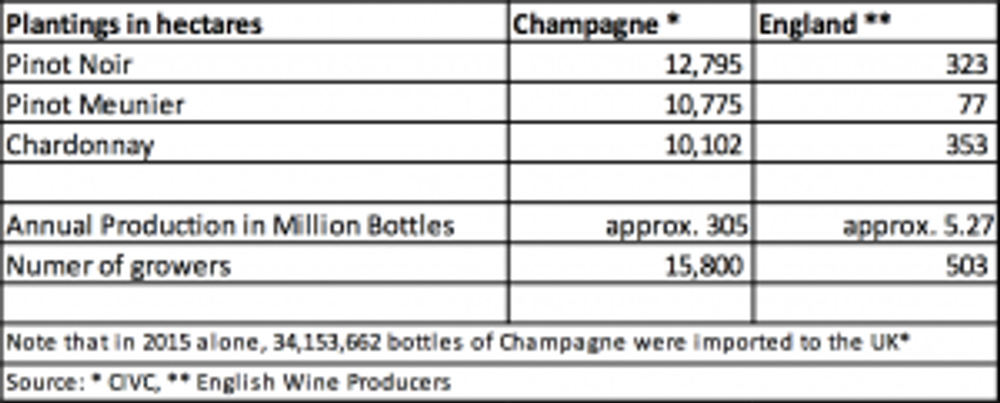
As Spurrier explained that this was “not a competition but a competitive comparison” the sommelier team poured the first eight samples. We were given time to taste and make notes and were then asked to rank the wines in terms of quality from one to eight. However, if certain wines were deemed equally good, we could, for example place two wines into one rank, but then had to leave the following rank free.
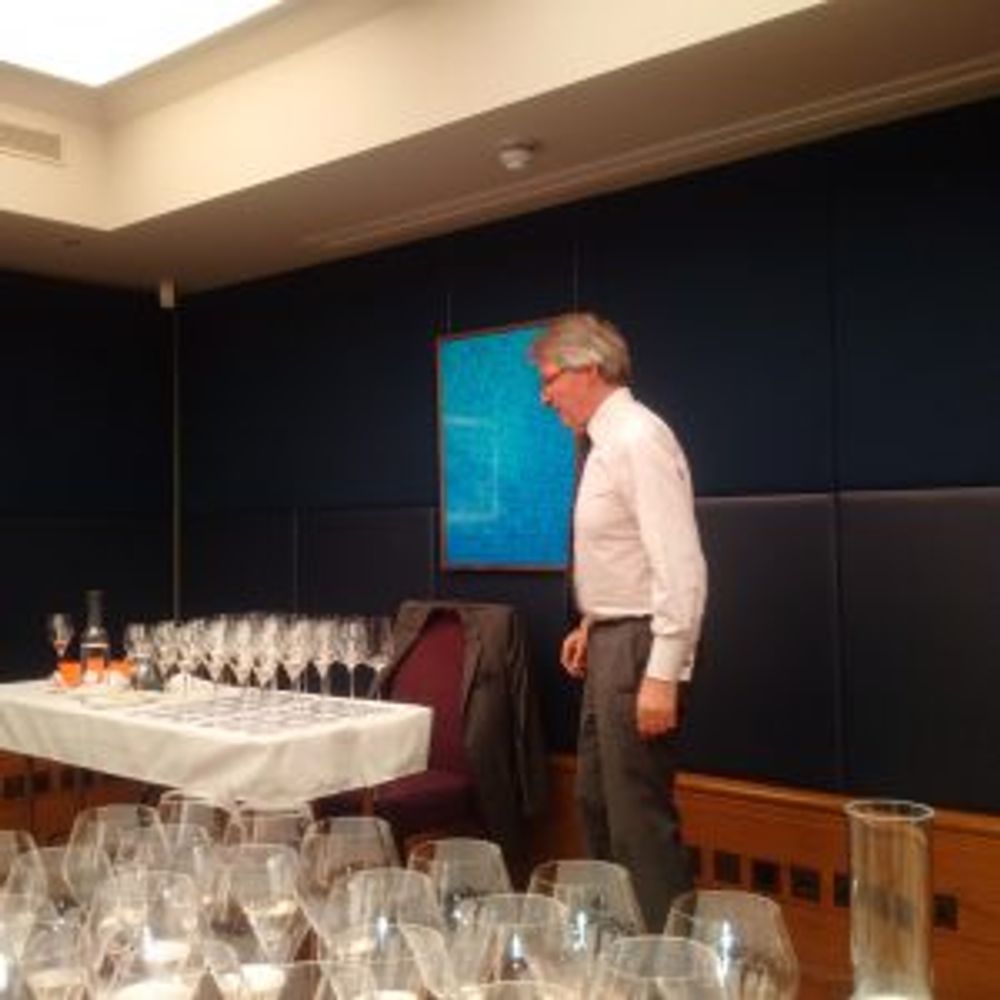
Steven Spurrier
So for example, if we thought wines 1 and 2 shared the first spot we would put them in first rank but nothing in second place… We were assured that half of each flight was English, the other half Champagne for the sparkling wines and international for the still wines. Those confident enough, could also give a guess of where the wines originated.
This first flight was just named “brut” and as it turned out, contained both vintage and non-vintage wines. The second flight of eight different Blanc de Blancs also contained vintage and non-vintage wines, the third flight consisted of six different rosé sparklers, again of vintage and non-vintage wines. The last flight of eight wines contained six whites and two reds.
The 67 Pall Mall team then compiled the results from the answer sheets that were collected after the flights. So here is what was poured and what the resulting ranking was. Whether the audience – a mix of 67 Pall Mall Club Members, winemakers and journalists – ranked in order of quality or popularity is open to interpretation.
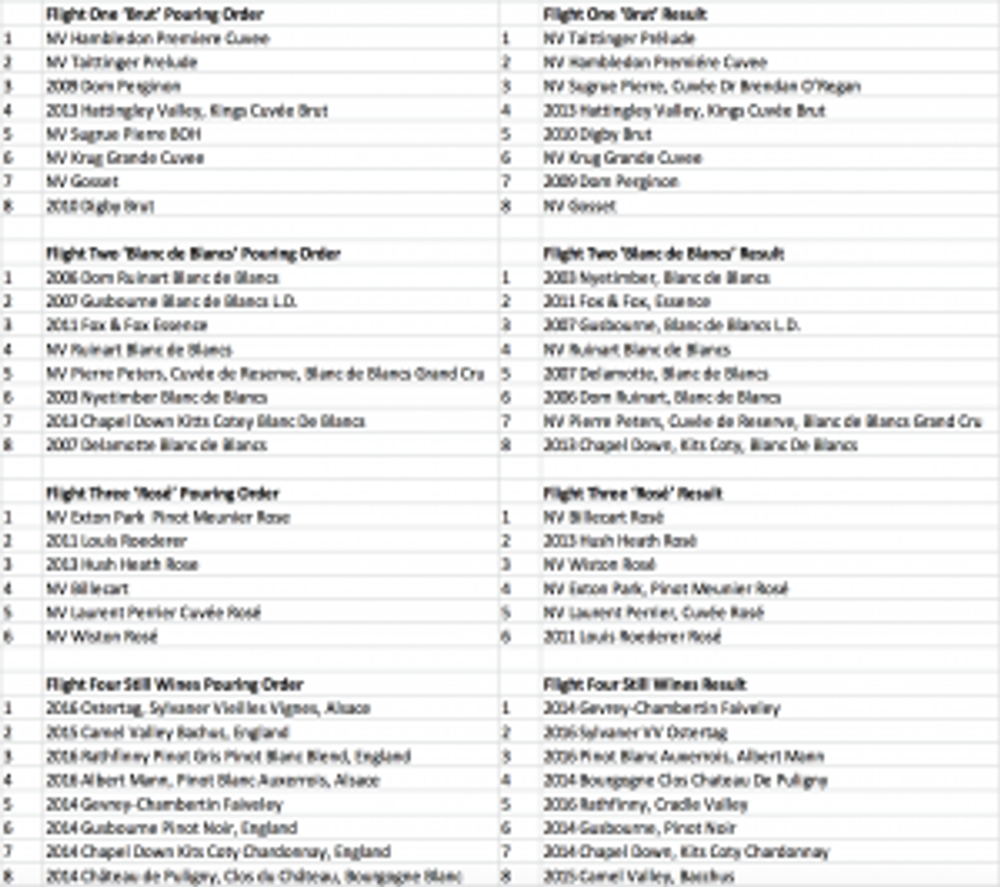
While the invitation had stated that “in order to assure a relatively even playing field, the wines will be selected from a (roughly) even retail price point, lest we get too carried away by trying to compare the Vieille Vignes of the famous French clos with some 3-year-old vines from the rolling Sussex hills…” the comparability of the wines is questionable. Spurrier had stated that the selected pairs were within 10% difference in price.
For me these results remain inconclusive – and I do not believe either that general statements about quality can be drawn on the basis of this tasting.
What was wonderful to experience, however, was that it was by no means always clear-cut which sparkling wines were English or Champenois – the English certainly held their ground in this “competitive comparison” and showed that they can deliver. As Spurrier fittingly remarked: “If you can tell England from France you’re a much better taster than I am.”
In the comparison of still wines the English wines were easier to spot, but this industry, quite rightly, banks on bubbles.
In the end neither Marianne nor Britannia walked away as the winner, they just showed us different sides of their undoubted beauty and charm. Marco Pierre White, whom the organisers had tried to invite, was the one left looking like a numpty.
